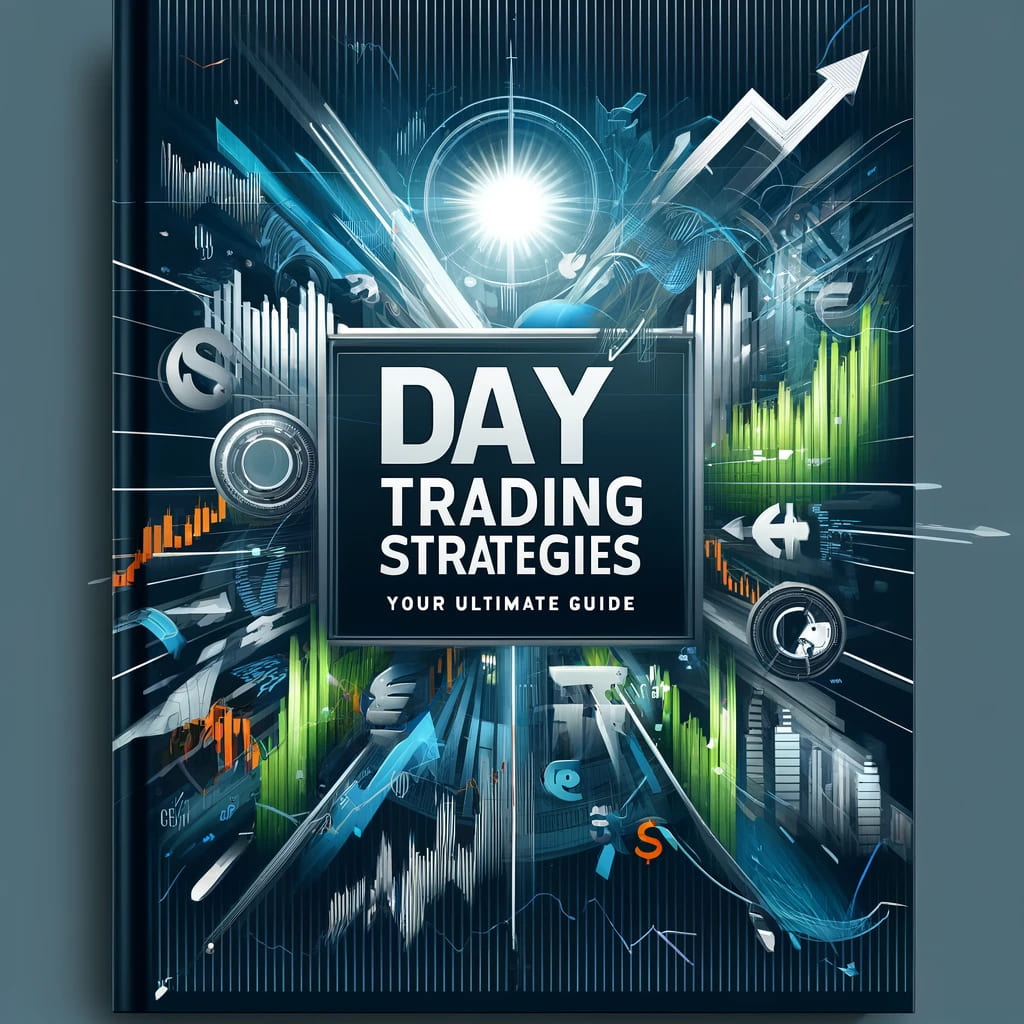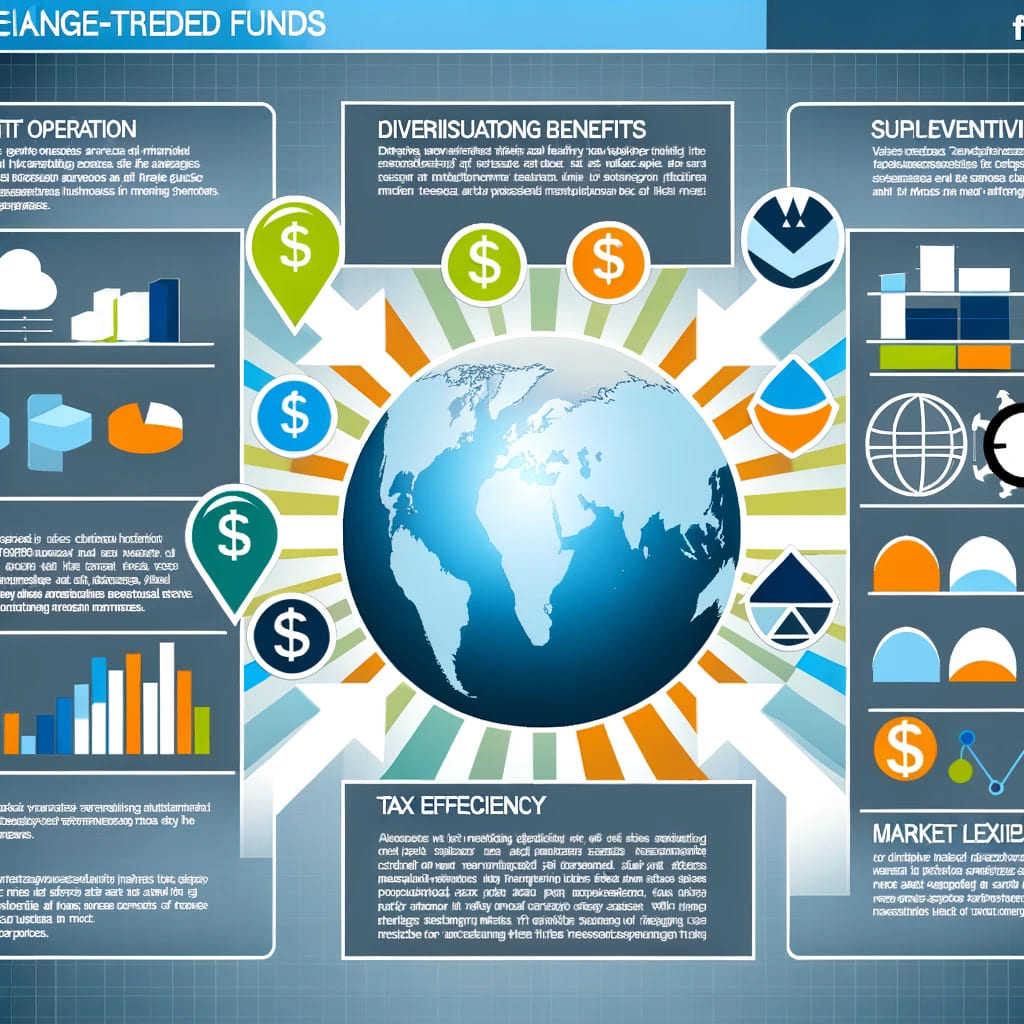Day Trading Strategy Guide
The Quantum Entanglement of Technical Analysis, Psychological Qualities, and Risk Management
Mr. LianxiPosted on 2024-04-07 17:41:37
#financialmanagement
Day trading, also known as intraday trading or daily trading, is a stock investment strategy that involves buying and selling stocks within the same trading day. The objective is to profit from the intraday fluctuations of stock prices. Day traders typically do not hold any positions overnight to avoid facing unpredictable risks that may occur after the market closes. This investment method requires quick reflexes, strict discipline, and good market analysis skills. Below are several key points about day trading:
- 1. Technical Analysis: Day traders often rely on technical analysis to make trading decisions. Technical analysis includes the use of charts and other tools to study market behavior and historical price patterns to predict future price movements. Day traders focus on elements such as support and resistance levels, trend lines, and various indicators and patterns, such as MACD, RSI, Bollinger Bands, etc.
- 2. Risk Management: Risk management is crucial for successful day trading. This includes setting stop-loss points and target prices, as well as not investing too much capital in a single trade. Day traders usually follow the principle of "not losing more than a certain percentage of capital" to manage risk.
- 3. Capital Requirements: In many countries, there are specific capital requirements for day trading. For example, in the United States, the Financial Industry Regulatory Authority (FINRA) requires that day traders' accounts must have at least $25,000 in capital. This regulation aims to reduce market risk and protect investors.
- 4. Psychological Factors: Successful day trading relies not only on techniques and strategies but also on strong psychological qualities. Traders need to be able to control emotions, avoid greed and fear, and quickly recover from losses.
- 5. Tools and Platforms: Day traders typically rely on professional trading platforms that offer real-time data, advanced charting tools, and fast trade execution capabilities. Additionally, many traders also use simulation trading software to practice and test their strategies.
- 6. Laws and Regulation: Day trading is subject to strict legal and regulatory conditions. Different countries have different regulations, and traders must be familiar with and adhere to the rules in their location.
 Generated by OpenAI DALL·E 3
Generated by OpenAI DALL·E 3
Technical Analysis
Technical analysis is a method for analyzing the behavior of stock prices or other securities, primarily based on market data, especially historical records of prices and volumes. The core assumption of technical analysis is that market prices have already reflected all known information, and price movements tend to develop along certain trends until new information causes the trend to change. Technical analysts use a variety of charts and technical indicators to predict future market movements.
Key Concepts of Technical Analysis
- Trends: One of the fundamental concepts of technical analysis is the trend, which refers to the direction in which market prices move over time. Trends can be upward, downward, or sideways. Identifying trends can help traders decide whether to buy or sell securities.
- Support and Resistance: Support is a low point in a downward trend that prices seem to have difficulty falling below; resistance is a high point in an upward trend that prices seem to have difficulty breaking through. These benchmarks can indicate the likelihood of a price reversal.
- Technical Indicators: Technical analysts use various indicators to analyze market conditions and predict future trends. These indicators are usually based on calculations of price and volume, such as moving averages, the Relative Strength Index (RSI), MACD, etc.
Examples of Technical Analysis
Suppose we are analyzing the daily chart of a stock and using the following technical analysis tools:
- Moving Averages (MA): Moving averages are used to smooth out price data to show the direction of the price trend. When a short-term moving average (such as a 10-day MA) crosses above a long-term moving average (such as a 50-day MA), it is known as a "golden cross," often interpreted as a buy signal. Conversely, when a short-term MA crosses below a long-term MA, it is known as a "death cross," a sell signal.
- Relative Strength Index (RSI): RSI is a momentum indicator used to measure the speed and change of recent price movements, ranging from 0 to 100. Generally, an RSI above 70 is considered to be "overbought," while an RSI below 30 is considered to be "oversold." Overbought may be a sell signal, while oversold may be a buy signal.
Suppose on the chart of a stock, the 10-day MA has just crossed above the 50-day MA, forming a golden cross. At the same time, the stock's RSI rebounds from below 30 to point towards 40. In this case, according to technical analysis, there might be a buy signal because the golden cross suggests a short-term uptrend in price, while the rise in RSI indicates the stock may be recovering from an oversold condition, increasing the likelihood of upward momentum. In this situation, traders might consider buying the stock, expecting the price to rise further as the trend develops.
Considerations in Practice
When using technical analysis as the basis for trading decisions, there are several important considerations:
- Multi-indicator Confirmation: A single indicator may produce misleading signals. Therefore, many traders seek confirmation from multiple indicators to strengthen the reliability of the signal. In the example above, the golden cross (a trend indicator) and the improvement in RSI (a momentum indicator) together provide a stronger buy signal.
- Time Frames: Technical analysis can be applied to different time frames, from minute charts to daily charts and even longer time periods. Different traders may choose different time frames based on their trading style and objectives. Short-term traders might focus on signals in smaller time frames, while long-term investors might focus on signals on daily charts or longer time frames.
- Risk Management: Even seemingly strong buy or sell signals should not ignore the principles of risk management. Setting appropriate stop-loss points and target prices, as well as controlling the percentage of capital invested in each trade, are important means to control risk and protect capital.
Conclusion on Technical Analysis
Technical analysis is a powerful tool that can help traders identify market trends and trading opportunities. However, it is not infallible and should be used in conjunction with other analysis methods (such as fundamental analysis) and strict risk management strategies. Successful trading is not just about predicting market movements but also involves managing risk, controlling emotions, and continuously learning and adapting to the ever-changing market environment.
Risk Management
Risk management is one of the most crucial concepts in trading and investing, especially in high-speed and high-risk trading activities like day trading. Effective risk management strategies aim to minimize losses while optimizing potential gains. Here are some key principles of risk management and their practical applications:
Setting Stop Losses
- Definition: A stop loss is a pre-determined price level at which a trader will automatically sell a stock to prevent further losses.
- Example: Suppose a trader buys a stock at $100 per share. To limit potential losses, the trader sets a stop loss 5% below the purchase price, at $95. This way, if the stock price falls, the trader’s loss will be limited to 5%.
Risk/Reward Ratio
- Definition: The risk/reward ratio measures the ratio of expected maximum loss (risk) to expected maximum gain (reward). The ideal risk/reward ratio depends on an individual's risk tolerance, but many traders look for at least a 1:2 ratio.
- Example: If a trader is willing to risk a maximum loss of $100 on a trade, based on a 1:2 risk/reward ratio, they should aim for at least $200 in profit. The trade should be closed if the target profit of $200 or the stop loss at $100 is reached.
Capital Management
- Definition: Capital management involves determining how much money to allocate for each trade. It involves not investing too much capital in a single trade to prevent a single loss from significantly impacting the overall portfolio.
- Example: If a trader's capital management rule is to not risk more than 2% of total capital on a single trade, then with a $10,000 capital, the maximum loss on any trade should not exceed $200.
Diversification
- Definition: Diversification is a risk-reduction strategy that involves spreading investments across different asset classes, industries, or geographic locations to lower the overall risk of the investment portfolio.
- Example: Even traders focused on day trading can achieve a degree of diversification by spreading trades across different stocks, sectors, or even different markets (e.g., stocks and futures) to reduce the impact of specific industry or market volatility.
Psychological Preparedness
- Definition: Successful risk management is not just about numbers and strategies but also involves managing the trader’s own psychological state. Staying calm, objective, and adhering to one’s rules is key to avoiding decisions driven by panic or greed.
- Example: A trader may feel increased pressure after facing consecutive losses, leading to taking higher risks in an attempt to quickly recover losses, a behavior known as "revenge trading." Effective psychological risk management involves recognizing the occurrence of such a situation and taking steps to avoid it, such as pausing trading until one can analyze the market and one’s decisions objectively.
Conclusion on Risk Management
Risk management is the cornerstone of ensuring long-term success in trading. By setting stop losses, maintaining a good risk/reward ratio, strictly adhering to capital management principles, implementing diversification strategies, and maintaining good mental health, traders can significantly reduce the risk of losses while maximizing profit opportunities. However, it's important to note that even the most stringent risk management measures cannot completely eliminate trading risks. Therefore, traders should be prepared to face possible losses and consider them as part of the trading process. Successful traders know how to learn from failures, continuously adjust and improve their strategies to adapt to the ever-changing market conditions.
Capital Requirements
In stock trading, especially in day trading, capital requirements refer to the minimum amount of funds that traders must hold in their trading accounts to participate in the market. These requirements are set by regulatory bodies with the aim of protecting investors and maintaining market stability. Different countries and markets may have different regulations, and here we will specifically discuss the U.S. market as an example.
Capital Requirements for Day Trading in the U.S.
In the United States, the Financial Industry Regulatory Authority (FINRA) has clear capital requirements for investors who engage in day trading. According to the rules, investors defined as "pattern day traders" must maintain at least $25,000 in capital in their brokerage accounts. This requirement applies to those who wish to execute four or more day trades within any given five business days, and these trades must account for more than 6% of their total trading activity.
Significance of Capital Requirements
- Preventing Overtrading: High capital requirements encourage investors to consider their trading decisions more carefully, thereby avoiding the risks of overtrading and excessive leverage.
- Risk Management: Having sufficient capital helps investors manage trading risks better, as they have a larger buffer to absorb losses.
- Compliance with Regulatory Requirements: Adhering to these capital requirements also helps ensure traders comply with regulatory standards, avoiding potential legal or financial consequences.
Practical Example
Suppose John is a new day trader who wants to start trading on the U.S. stock market. Before he can begin trading, John needs to deposit at least $25,000 in his brokerage account to meet the minimum capital requirements for day traders. This means that even if John incurs some losses in trading, he still needs to ensure that his account balance does not fall below the $25,000 threshold; otherwise, he may be restricted from making further day trades until the capital level is restored.
If John's account falls to $24,000 at the end of a trading day, he would not meet the capital requirements for day trading. To continue day trading, John would need to replenish his account to at least $25,000 before the next trading day. If he is unable to do so, John would be restricted from day trading until the account once again reaches the necessary funding level.
Conclusion on Capital Requirements
Capital requirements are an integral part of day trading, aiming to protect individual investors and maintain market stability. By setting these requirements, regulatory bodies ensure that only those with sufficient funds and a better understanding of the relative risks can participate in day trading, thereby reducing the risk of significant market fluctuations and investor losses. These regulations also encourage investors to adopt a more responsible and strategic approach to trading, thereby enhancing the overall health and stability of the market.
For individuals looking to engage in day trading, understanding and adhering to these capital requirements is crucial. This is not only for compliance with legal regulations but also for their financial safety and trading success. Even though capital requirements may vary between different countries and markets, these basic principles still apply: adequate capital provides greater trading flexibility, helps investors manage risks better, and increases the likelihood of success in the market.
Furthermore, following capital requirements and combining them with effective risk management strategies, such as setting reasonable stop losses and not concentrating all funds in a single trade, can further protect investors from significant financial losses. Investors should always remember that day trading carries higher risks, and therefore, they must proceed with caution and continue learning and adapting to improve their trading skills and strategies.
In summary, capital requirements are not just a legal obligation but also a tool for risk management. They encourage investors to establish a solid financial foundation, thus minimizing potential losses while pursuing profits.
Psychological Factors
Psychological factors play an extremely important role in stock investment and day trading. A trader's psychological state directly affects their decision-making process, risk tolerance, and reaction to market dynamics. Successful trading relies not only on market analysis and strategy execution but also requires a good psychological quality, including patience, discipline, and emotional control. Here are some key psychological factors and specific examples:
Fear and Greed
Fear and greed are two major emotions that drive market fluctuations. Greed prompts people to continue buying stocks when prices are rising in hopes of gaining more profit, while fear leads people to sell hastily during price declines to avoid further losses. These emotions often lead to irrational decisions that contradict long-term investment goals.
Example: When the market rapidly rises, a trader, driven by greed, may ignore the risks of overvaluation and choose to continue holding or increasing investments, hoping for further price increases. When the market suddenly adjusts, this person might sell at a low point due to panic, thereby missing out on subsequent rebound opportunities.
Overconfidence
Overconfidence refers to traders having an unrealistic confidence in their judgment and capabilities, often underestimating the market's uncertainty and risks. This can lead to excessive trading and taking on too much risk, increasing the likelihood of losses.
Example: An experienced trader may become overly confident after several successful trades, believing they can continuously predict market trends, possibly ignoring risk management principles and investing too much capital in an uncertain trade. When the market moves in the opposite direction, they may suffer significant losses.
Discipline and Patience
Successful trading requires strict discipline and patience, following a set trading plan and strategy rather than being driven by immediate market fluctuations or emotions. Lack of discipline and patience often leads to impulsive trading, affecting trading outcomes.
Example: A trader sets rules for trading based on specific technical indicators. However, if the trader lacks patience during market fluctuations, they might execute trades before the indicators reach the predetermined conditions or hastily close trades without reaching the expected profit target or stop-loss point, potentially leading to unfavorable trading results.
Conclusion on Psychological Factors
The impact of psychological factors on day trading cannot be overlooked. Traders must learn to manage their emotions and develop a strong psychological quality to make rational decisions in a high-pressure environment. Here are some strategies to help traders cope with psychological challenges:
- Emotional Detachment: Successful traders learn to detach their emotions from trading decisions. They recognize that the market is unpredictable and accept that there will inevitably be failed trades. By not allowing a single failed trade to affect the decision-making for the next trade, they can avoid the chain reactions caused by emotional trading.
- Establishing a Clear Trading Plan: A detailed trading plan includes entry points, exit points, risk/reward ratio, and capital allocation for each trade. Having a plan and strictly adhering to it can help traders remain calm and rational in the face of market volatility.
- Self-reflection and Learning: Regular self-reflection helps traders identify their weaknesses in psychology and technique. By learning from each trade and continuously adjusting and improving strategies, traders can enhance their self-control and market judgment.
Strategies for Psychological Challenges Conclusion
The importance of psychological factors in day trading is as significant as technical analysis or risk management. Traders must be aware of how their psychological state affects trading decisions and take proactive measures to improve their psychological resilience and emotional management skills. Through continuous learning, self-reflection, and adherence to discipline and patience, traders can significantly increase their chances of survival and success in the competitive market.
Tools and Platforms
In stock investment and day trading, choosing the right tools and platforms is crucial for the success of trading. These tools and platforms provide necessary data analysis, real-time market information, trade execution speed, and risk management functions, enabling traders to make quick and accurate decisions. Here are some key types of tools and platforms, along with specific examples of how they support traders:
Trading Platforms
Trading platforms are the primary tools for traders to conduct buy and sell operations, which can be web platforms, desktop applications, or mobile apps. A good trading platform should offer an intuitive interface, real-time market quotes, technical analysis tools, and efficient order execution capabilities.
Example: For instance, MetaTrader 4 (MT4) is a popular trading platform widely used for forex, precious metals, and CFD trading. It provides a wealth of charting tools, indicators, and Expert Advisors (EAs) functionality, allowing traders to automate their trading strategies while conducting in-depth market analysis.
Market Analysis Tools
Market analysis tools help traders analyze market trends and identify trading opportunities. This includes technical indicators, chart analysis software, and economic calendars, among others.
Example: TradingView is a platform that offers detailed charts and social features, allowing traders to view analyses and forecasts by other traders while using technical analysis tools to formulate their own trading strategies. The social element adds an additional layer of information, helping traders make better decisions.
Risk Management Software
Risk management software assists traders in monitoring and managing their market risks. Such tools can automatically calculate trade risks, set stop-loss points and profit targets, and monitor capital usage.
Example: Some advanced trading platforms have built-in risk management features that allow traders to easily set the maximum risk amount for each trade. For example, a platform might permit setting the maximum risk at no more than 2% of the total account funds for each trade, thereby helping traders avoid excessive losses from a single trade.
Simulation Trading Platforms
Simulation trading platforms or demo trading accounts allow traders to practice trading without risking real funds, serving as practical tools for learning market dynamics and testing trading strategies.
Example: Many brokers offer demo trading accounts that mimic real market conditions, allowing novice traders to gain hands-on experience before starting real trading. For instance, a broker might provide a simulation platform where simulated funds and market prices enable traders to practice trading in a risk-free environment, learning how to use different trading orders such as market orders, limit orders, and stop orders, and becoming familiar with adjusting their trading strategies based on market changes.
Information and News Platforms
Information and news platforms provide the latest market news, analysis reports, and economic events, which are crucial for making informed trading decisions. These platforms help traders track important events and trends that might affect the market.
Example: Bloomberg and Reuters offer comprehensive financial news and market analysis, which is invaluable for traders who need to adjust their trading strategies based on the latest market dynamics. Additionally, these platforms provide in-depth market analysis and expert commentary, helping traders understand the factors behind market movements.
Social Trading Platforms
Social trading platforms allow traders to share their trading strategies, market views, and trading results, and learn from other traders. Such platforms facilitate the exchange of knowledge, enabling traders to learn from the experiences of others.
Example: eToro is a well-known social trading platform that allows traders to copy the trades of successful traders. This means that novice traders can directly replicate the trades of experts while learning how they analyze the market and make trading decisions.
Conclusion on Tools and Platforms
Choosing the right trading tools and platforms is key to successful trading. Different tools and platforms offer various functionalities to help traders analyze the market, execute trades, manage risks, and learn trading skills. Traders should select the appropriate tools and platforms based on their trading style, strategy, and needs. As experience accumulates and market conditions change, traders may need to continually evaluate and adjust the tools and platforms they use to maintain the effectiveness and adaptability of their trading strategies.
Laws and Regulations
Laws and regulations play a key role in stock investment and day trading, aiming to protect investors, maintain market order, and enhance the transparency and fairness of the financial markets. Regulatory agencies in various countries oversee the operation of the financial markets and the behavior of participants by developing and enforcing a series of rules and standards. These regulations cover trading practices, capital requirements, reporting obligations, and qualifications of traders, among other aspects. Here are some specific examples illustrating how laws and regulations impact day trading:
The 'Pattern Day Trader' Rule in the United States
In the United States, the Financial Industry Regulatory Authority (FINRA) stipulates that investors identified as 'pattern day traders', who execute four or more day trades within any five business days and these trades exceed six percent of the trader’s total trading activity, must maintain at least $25,000 in their trading accounts. This regulation aims to limit excessive trading and reduce market risk.
The EU's MiFID II
The Markets in Financial Instruments Directive II (MiFID II) is a set of financial market rules enacted by the European Union to increase financial market transparency and promote fair competition. MiFID II has stringent requirements for the trading of financial instruments, corporate governance structures, the protection of client assets, and investor protection. For example, it requires that more trades be executed through regulated trading venues and enhances reporting requirements for pre- and post-trade data.
Japan's Financial Instruments and Exchange Act
Japan's Financial Instruments and Exchange Act regulates the trading of financial products, including stocks. It establishes provisions regarding trading transparency, fairness, and investor protection. The law requires traders and financial institutions to adhere to strict reporting and information disclosure rules to protect investors from unfair trades and market manipulation.
Regulation of Cryptocurrency Trading
With the rise of cryptocurrencies and digital assets, many countries have begun to formulate laws and regulations to oversee this emerging market. For instance, the U.S. Securities and Exchange Commission (SEC) and the Commodity Futures Trading Commission (CFTC) have already regulated certain types of cryptocurrency trading activities and are considering further regulatory measures. The purpose of these regulatory actions is to protect investors, prevent money laundering, and ensure the stability of the financial system.
Conclusion on Laws and Regulations
Laws and regulations are crucial for maintaining a healthy, transparent, and fair financial market. They protect the interests of investors, prevent financial fraud, and maintain overall market stability. For day traders, understanding and complying with these legal and regulatory provisions is extremely important. Not only does it help to avoid potential legal consequences such as fines or trading restrictions, but it is also key to achieving sustained trading and protecting capital.
Complying with regulatory requirements also means that traders need to continually update their knowledge base, as the laws and rules of the financial markets are constantly changing. For example, with technological advancements and the emergence of new financial products, regulatory agencies may introduce new regulations to address these changes. Therefore, staying informed about relevant legal changes and adjusting trading strategies and practices accordingly is essential for any serious trader.
Moreover, the regulatory frameworks may differ between countries and regions. Thus, cross-border traders need to pay special attention to complying with the specific regulations of each market. In some cases, this may require obtaining additional permissions or meeting specific reporting requirements.
In summary, laws and regulations are an indispensable part of the financial markets, playing a key role in maintaining fair competition, protecting investors, and promoting market stability. Day traders should consider compliance with these provisions as part of their responsibility and integrate them into their trading strategies and daily practices. By doing so, they can not only protect themselves from unnecessary legal risks but also seek success in a safer and more transparent market environment.
High-Risk, High-Reward Day Trading
Day trading is a highly specialized investment strategy that requires traders to buy and sell stocks within the same trading day, aiming to profit from the intraday fluctuations of the market. The key to success in this strategy lies in the application of technical analysis, including accurate interpretations of charts, trends, and various market indicators. Simultaneously, risk management is an indispensable part of day trading, involving setting reasonable stop-loss points and profit targets, as well as strictly controlling capital allocation to ensure the safety of capital. Additionally, traders must meet specific capital requirements, maintain a good psychological state, and resist the impacts of market pressure. Choosing the appropriate trading platform and tools can enhance trading efficiency and effectiveness. Lastly, understanding and adhering to relevant laws and regulatory rules are crucial for ensuring the legality and safety of trading. In summary, although day trading offers potentially lucrative returns, it also comes with high risks. Traders need to have rigorous strategies, a solid knowledge base, and excellent execution abilities to achieve success in the securities market.






















